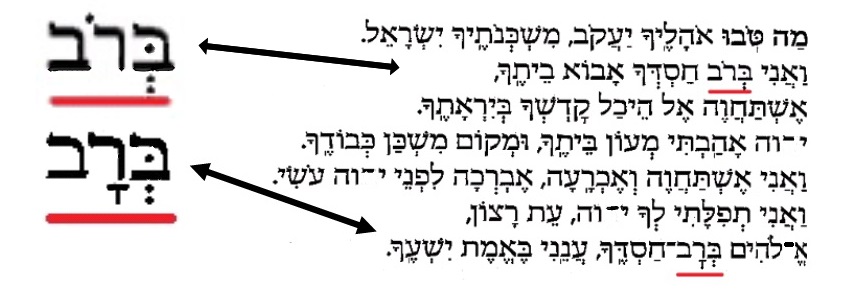This is a revisiting of a previous column, inasmuch as someone asked the question again a few weeks ago. The issue at hand is a Hebrew vowel, the one which looks like a tiny “T” and is pronounced by many Conservative Jews as “ah” (in the International Phonetic Alphabet it is similar to ä) and pronounced by many Orthodox Jews as the “oo” in “look” or “u” as in “put” (in the IPA similar to ʊ).
Called a kamatz, it turns out there are two (or more) forms of that vowel: a kamatz katan and a kamatz gadol. Kamatz gadol is the one we see most often, and we pronounce it “ah,” as mentioned above. Counterintuitively, the kamatz katan is the larger of the two, is more rare, and is pronounced “o,” as in “toe” (IPA similar to o̞ — and we note that the symbol carries a kamatz). Take a look below at the Ma Tovu, below. Both underlined words are pronounced the same:

In some printing, the kamatz katan is printed longer, as it is here from the Siddur Lev Shalem. In some, the horizontal line is separated from the bottom (Siddur Sim Shalom, for instance), like a division sign without the top dot. (Sometimes it is printed with no difference.)
Many permutations of the word כּל have a kamatz katan; it is always pronounced as “coal.”
And that is why, in Shirat Hayam (p. 143) and in Hallel (p. 320), we sing “OH-zee v’zimrat ya.”